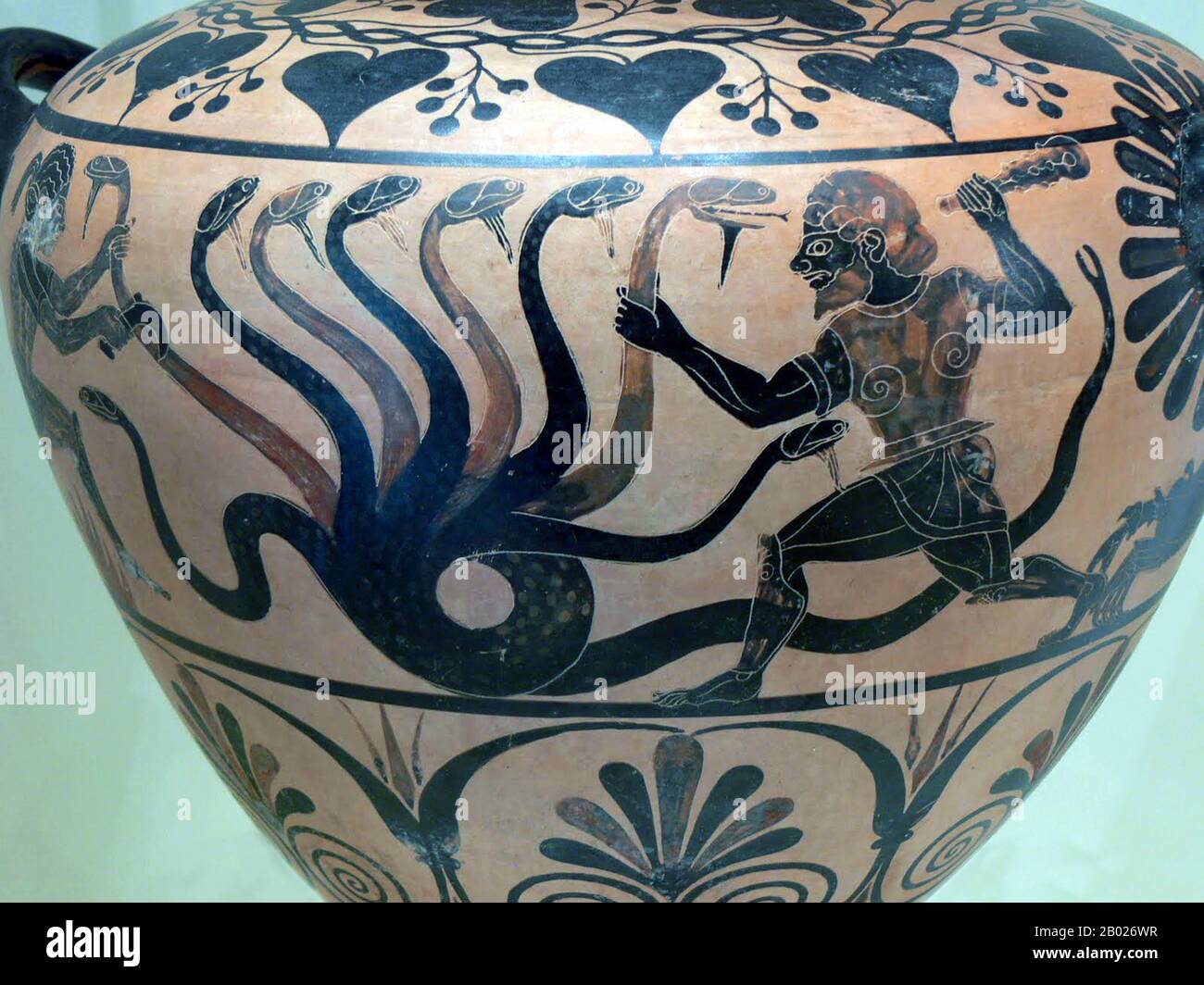In Greek mythology, the Lernaean Hydra was an ancient serpent-like chthonic water beast, with reptilian traits (as its name evinces), that possessed many heads — the poets mention more heads than the vase-painters could paint, and for each head cut off it grew two more — and poisonous breath and blood so virulent even its tracks were deadly. The Hydra of Lerna was killed by Heracles as the second of his Twelve Labours. Its lair was the lake of Lerna in the Argolid, though archaeology has borne out the myth that the sacred site was older even than the Mycenaean city of Argos since Lerna was the

Image details
Contributor:
CPA Media Pte Ltd / Alamy Stock PhotoImage ID:
2B026WRFile size:
49.4 MB (1.2 MB Compressed download)Releases:
Model - no | Property - noDo I need a release?Dimensions:
4800 x 3600 px | 40.6 x 30.5 cm | 16 x 12 inches | 300dpiDate taken:
17 May 2013Photographer:
Pictures From HistoryMore information:
This image could have imperfections as it’s either historical or reportage.
In Greek mythology, the Lernaean Hydra was an ancient serpent-like chthonic water beast, with reptilian traits (as its name evinces), that possessed many heads — the poets mention more heads than the vase-painters could paint, and for each head cut off it grew two more — and poisonous breath and blood so virulent even its tracks were deadly. The Hydra of Lerna was killed by Heracles as the second of his Twelve Labours. Its lair was the lake of Lerna in the Argolid, though archaeology has borne out the myth that the sacred site was older even than the Mycenaean city of Argos since Lerna was the site of the myth of the Danaids. Beneath the waters was an entrance to the Underworld, and the Hydra was its guardian. The Hydra was the offspring of Typhon and Echidna, both of whom were noisome offspring of the earth goddess Gaia.